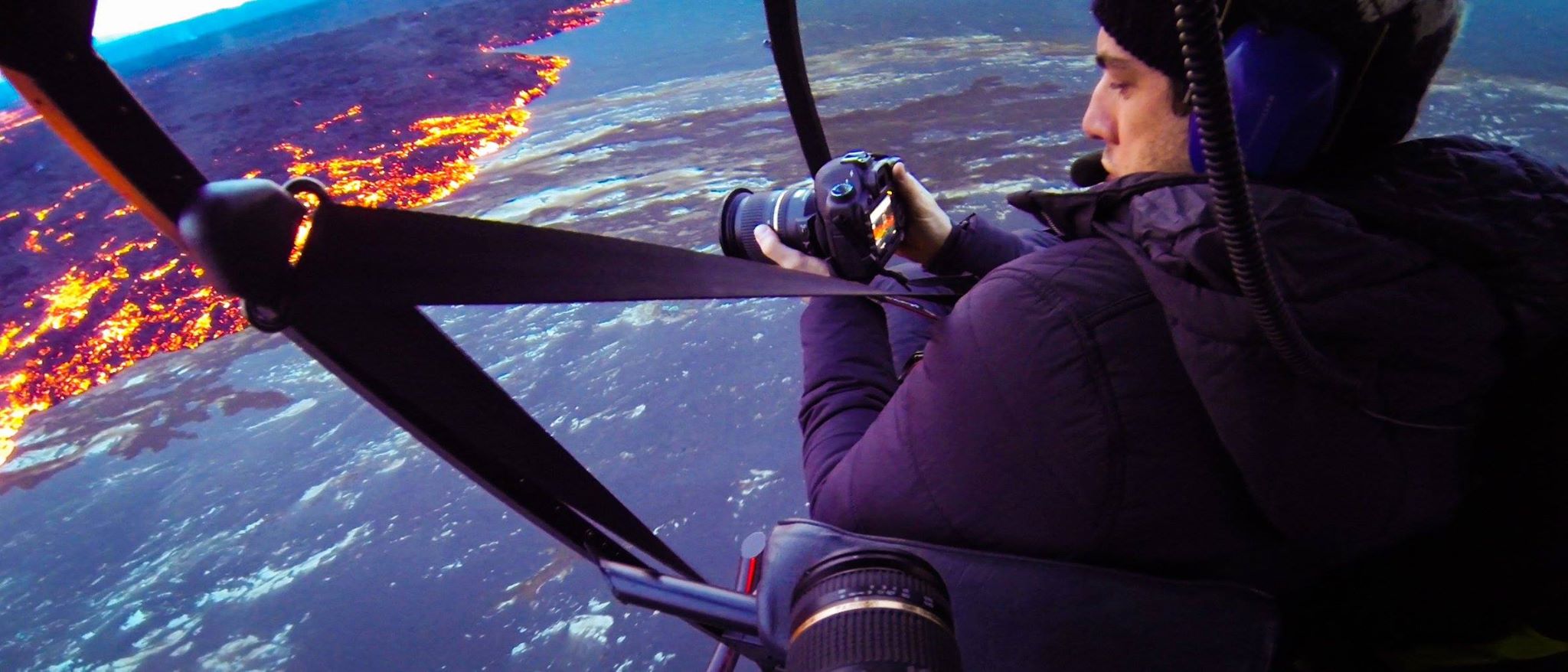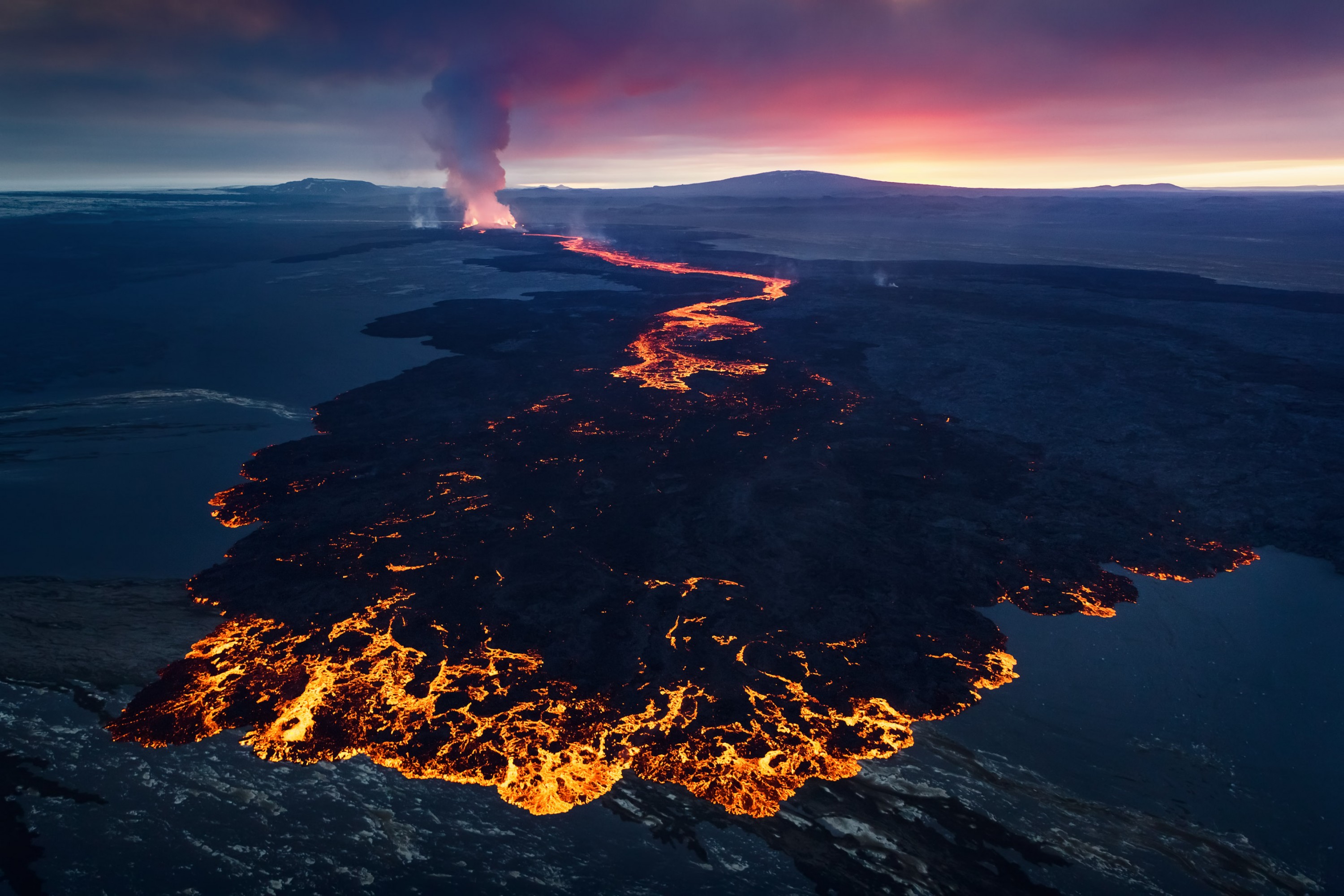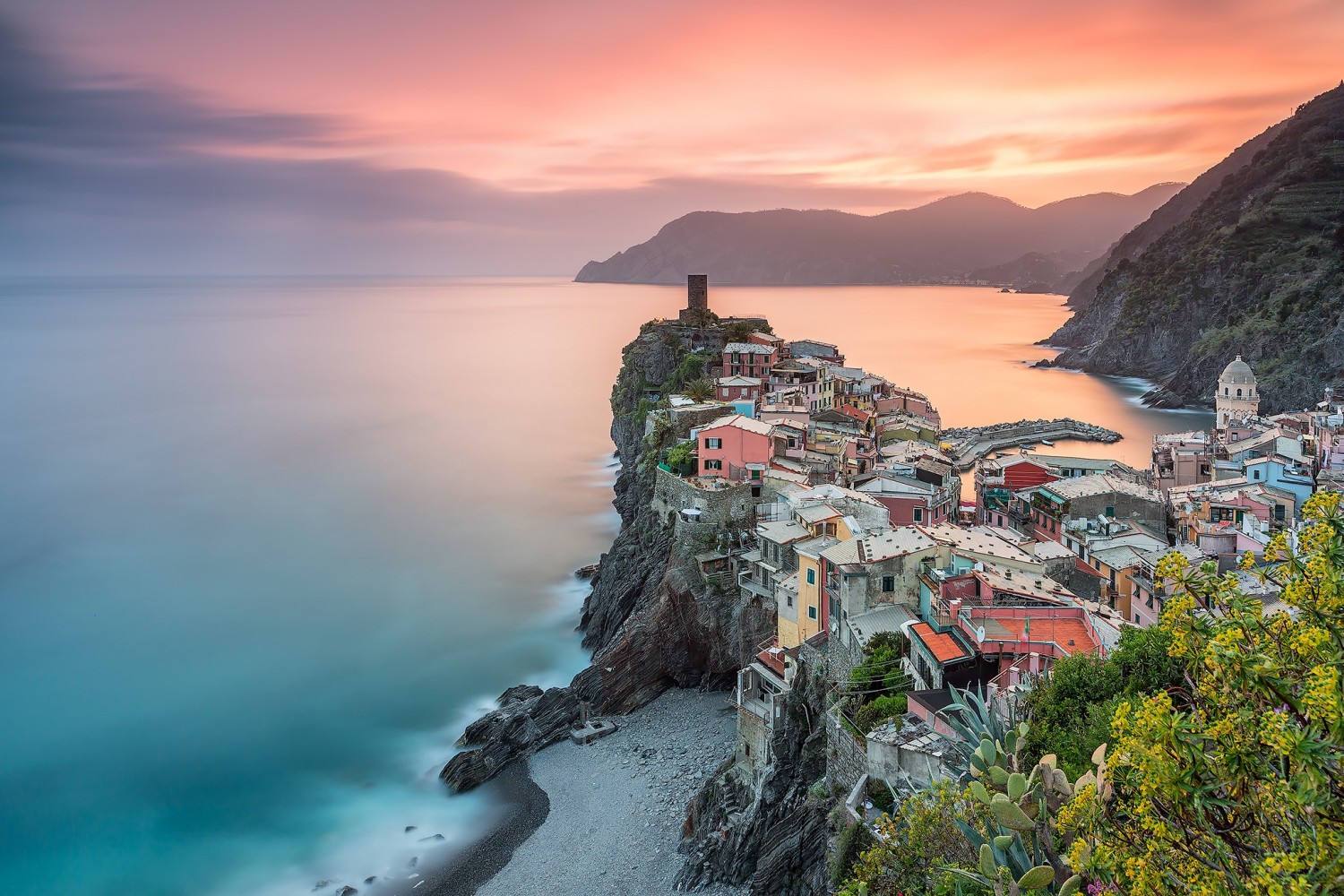Erez Marom is a professional nature photographer, photography guide, and traveler-adventurer based in Israel. Visit his official website to see more of his work. In this story, Erez shares his expert tips, personal experiences, and a gear recommendations for capturing spectacular photos of volcanoes and lava.
I think everyone is fascinated with volcanoes. How can you not be? In the past, they were considered portals to the underworld, which in a sense they are! When you realize the extreme conditions needed to melt rock and make it shoot up tens of meters in the air, you cannot imagine anything similar in any known environment. So the sheer difference to anything else we are used to is a first source of attraction.
Volcanoes are uniquely beautiful. The red and orange colors of the lava are a magnet to the eye, especially when combined with the usual black volcanic earth all around. Add clouds of ash and the formations of the eruption itself, and sometimes even other elements such as water—and you have a very beautiful combination. In addition, volcanic landscapes are changing landscapes, meaning they always look different after some time. They allow more and more original imagery to be made in the same location.
The first time I ever saw lava from a close range was in Erta Ale volcano in Ethiopia, November 2013. Erta Ale is one of only a handful of permanent lava pool is the world, and it’s quite a sight. You can basically walk almost all the way to the edge of the crater, meaning you are a few meters away from a pool of red, boiling, exploding lava! The visit was one of the most powerful experiences in my life, and I was hooked on shooting lava ever since!
The next experience after that was the Holuhraun eruption just two months ago, which was also a spectacular trip in which I produced my best volcano images yet. In this specific trip to shoot the Holuhraun eruption site, I had to face many challenges. Firstly, I really wanted to shoot the lava both from the ground and from the air.
Since the Icelanders had closed off the area to visitors other than reporters and scientists, I had to get some sort of document in order to get a permit. So I used a few connections and got the permit. It was much more stressful than it sounds. The second problem was that in order to get inside the eruption area, even with the permit, I needed an Icelandic guide.
I had three candidates for this—all of whom are personal Icelandic friends who are also photographers. Two were away in Greenland guiding there, another had a foot operation done and couldn’t even step! After a lot of searching I had mutual friends Ólafur Haraldsson and Daði Harðarson join up with me and we made the journey to the eruption site. Since the site is in the middle on nowhere, The drive to the farm where we were based was very long, not to mention 4 hours of travel to get to the eruption site itself!

Photo by Daniel Haußmann
After shooting the eruption from the ground, I wanted to shoot it from the air by sunset. On the first day the sunset spot had been booked already. On the second and third day the weather was too windy and foggy to fly.
Only by the fourth day of waiting could I get on the helicopter and fly to shoot the eruption. But that’s not all—the helicopter fight was extremely expensive, more so since I intended to stay longer above the lava than commonly done, to maximize photographic potential.
By a crazy stroke of luck, I met German Daniel Haußmann, who was crazy enough to join my plan. We ended up spending a whopping 40 minutes above the eruption site, which cost us an arm and a leg, but it was all worth it. I’d like to thank pilot Matthias Vogt for flying us so well and trying his best to follow my capricious, ever-changing instructions.
When shooting lava, there are a number of things you should keep in mind. Below are a list of handy tips for getting great photos of volcanoes:
1. It’s not always easy to predict a good day for shooting volcanoes, especially when you need to book a flight far in advance. If you have great weather for shooting, you basically go. Getting an amazing pink sunset was a matter of pure luck. By late afternoon, it was pretty clear that the sunset was going to be spectacular, but I couldn’t plan it. More luck than brains it seems.
2. Lava looks very different by day and by night. By day, it’s red, but it usually blends with the surroundings and doesn’t stick out very strongly. By night, it really glows red-hot and allows one to create very special effects.
On the other hand, the dynamic range of the scene is extreme at night, and you need to take into account the possibility of not being able to extract detail from the surroundings. HDR or other techniques may need to be used to compensate for this.
3. Erupting volcanoes look different from every angle. Do your best to view and shoot the site from every possible angle. This includes going around the eruption site to catch a different direction. Also, take a plane or helicopter and shoot it from above for vastly different results and a better look into the lava source.
4. One needs to take into account the extreme heat-haze produced in the area. Don’t expect to get tack-sharp images- the haze just blurs everything—sometimes more, sometimes less. Get used to it and shoot when it’s less severe.
5. When it comes to gear, there’s not much difference in equipment when shooting volcanoes in comparison to other kinds of landscapes. You basically use whatever’s necessary in the moment.
In Erta Ale, I used an ultra wide angle lens since I could get so close to the lava. In Holuhraun, however, I used telephoto lenses—70-300mm and even 400mm when shooting from the ground, and 24-70mm and 70-300 from the air. It really comes up to your desired composition and subject distance.
6. To get aerial shots, consider using a helicopter. This is by far my favorite way of shooting aerials, since it’s so much more flexible compared to planes. Contrary to drones, you’re actually there—right in the action. Up in a helicopter, you can hover, fly up or down, and instruct the pilot in real time. The downside, naturally, is the price.
If you’d like to experience and shoot some of the most fascinating landscapes and wildlife on Earth with Erez Marom as your guide, take a look at his unique photography workshops:
Land of Ice – South Iceland (January) – view trailer
Winter Paradise – North Iceland (January/February) – view trailer
Northern Spirits – Lofoten Islands (January/February)
Desert Storm – Namibia (March)
Giants of the Andes and Fitz Roy Annex – Patagonia (March/April)
Follow Erez on Facebook, Google+ and 500px. You can also subscribe to his mailing list for updates.
Got a question or comment for Erez about his photos, techniques, and process? Leave a comment below!













Leave a reply